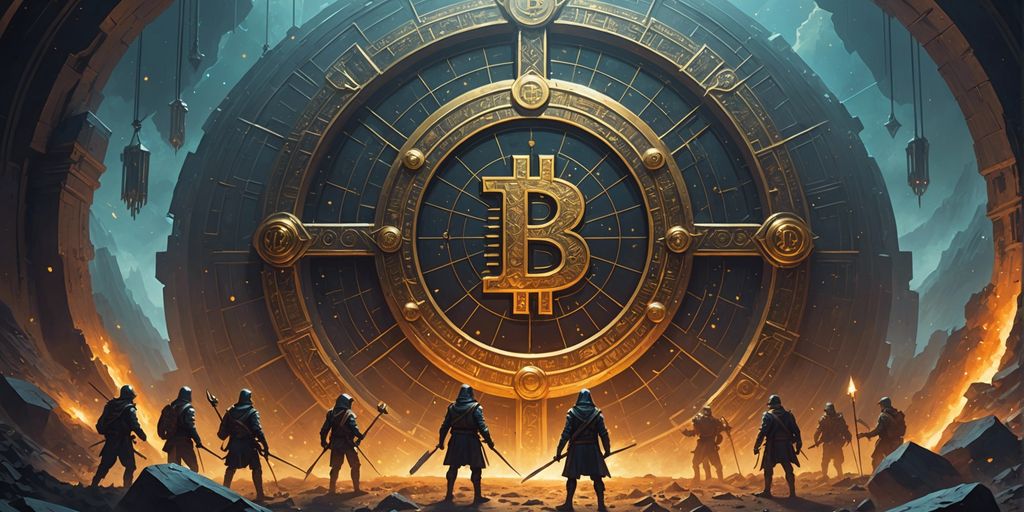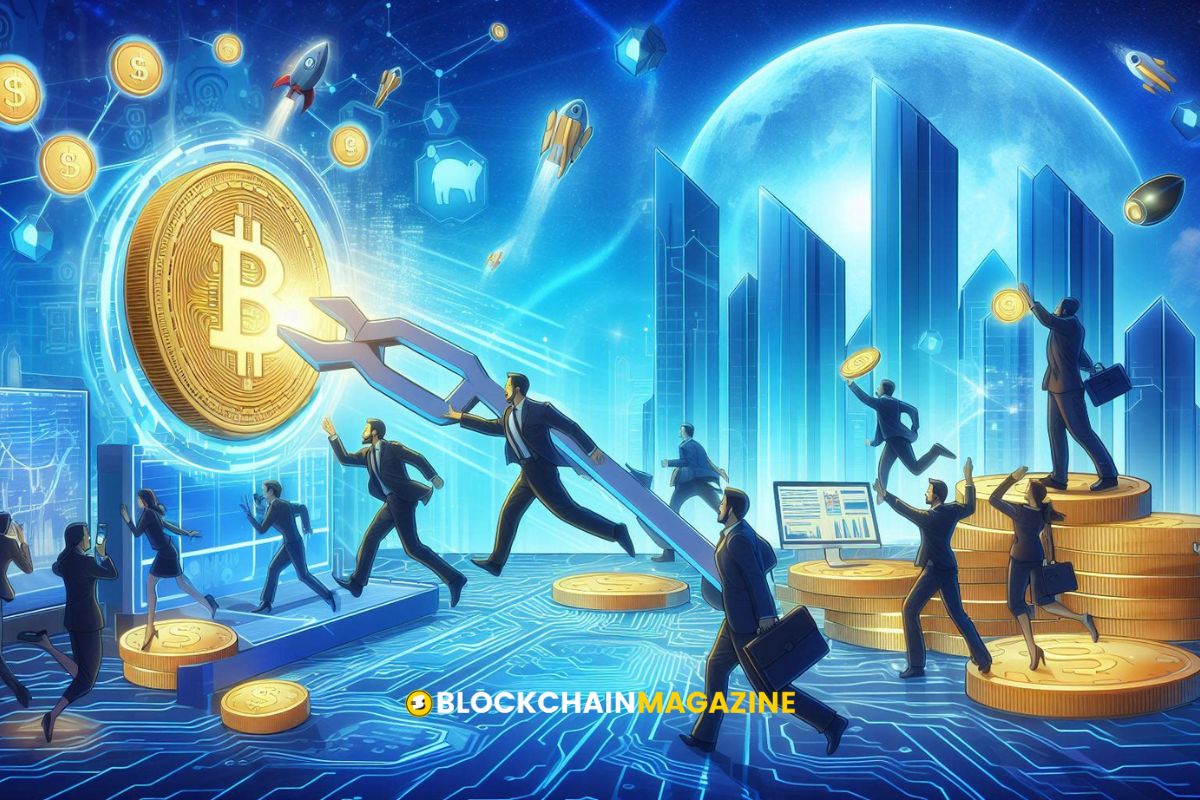The Security Implications of a Finite Bitcoin Supply: Will Miners Remain Incentivized?
Bitcoin, the pioneering cryptocurrency, operates on a principle of finite supply, capped at 21 million coins. This scarcity is central to its value proposition, but it also raises questions about the future of the network, particularly concerning the incentives for miners once all bitcoins are mined. As block rewards diminish over time, the reliance on transaction fees will grow, shaping the economic and security landscape of Bitcoin. This article delves into the implications of a finite Bitcoin supply and explores whether miners will remain incentivized to secure the network in the long term.
Key Takeaways
- Bitcoin’s finite supply is capped at 21 million coins, enhancing its scarcity and value.
- Miners’ rewards decrease over time due to events like Bitcoin halving, shifting their revenue model towards transaction fees.
- Even after all bitcoins are mined, transaction fees will continue to incentivize miners to secure the network.
- The difficulty adjustment mechanism ensures that the Bitcoin network remains secure despite fluctuations in mining participation.
- Miners may diversify into other cryptocurrencies or optimize their operations to remain profitable in the evolving landscape.
Understanding Bitcoin’s Finite Supply
Bitcoin’s finite supply is a defining part of Satoshi Nakamoto’s decentralized protocol. In an effort to engineer the cryptocurrency with a predetermined limit, Bitcoin boasts scarcity which increases Bitcoins demand and value over time.
The Role of Miners in the Bitcoin Network
Financial and Ideological Motivations
Miners decide to engage in the mining process for a variety of reasons, both financial and ideological. Financial incentives include the predefined quantity of Bitcoin they receive as a reward for their contributions. This reward motivates miners to continue securing and expanding the blockchain. Ideologically, many miners are driven by the belief in a decentralized financial system and the potential for Bitcoin to revolutionize the global economy.
Mining as a Long-Term Investment
Mining is often seen as a long-term investment. Miners invest in expensive hardware and consume significant amounts of electricity to solve compute-intensive puzzles. The initial costs can be high, but the potential returns, especially during periods of Bitcoin price surges, can be substantial. Crypto miners capitalize on BTC surge amid exchange transfer surge, leveraging their BTC reserves post-halving.
Impact of Bitcoin Halving on Miners
Bitcoin halving events, which occur approximately every four years, reduce the block reward by half. This reduction can lead to revenue contraction due to diminished transaction fees. However, it also tends to increase the scarcity and value of Bitcoin, potentially offsetting the reduced rewards. U.S.-based miners often experience intensified selling momentum during these periods, but those who have worked to control costs and improve efficiency benefit from the overall network’s robustness.
The Bitcoin network relies on a distributed set of validators, known as miners, to authenticate commercial transactions in a process known as mining. Miners compete to solve compute-intensive puzzles to verify and record transactions on the Bitcoin blockchain, employing a proof-of-work or PoW consensus mechanism to ensure transaction integrity.
Transition from Block Rewards to Transaction Fees
How Transaction Fees Work
When miners produce blocks, they receive the block reward and the transaction fees associated with that block. The latter is known as a “transaction fee reward.” When the block reward drops to zero, miners will continue to receive transaction fee rewards as an incentive to stay in the network and keep it running. Currently, transaction fee rewards are only a small fraction of the total BTC mining rewards. This will reach 100% in the future as the block reward approaches zero.
Expected Changes Post-2140
The total value of all transaction fees paid to miners is expected to exceed the final block reward between the years 2032 and 2048. Once the cap is reached, no new Bitcoins will be created as block rewards, marking the end of this incentive. Miners will rely on transaction fees as their primary financial incentive for validating and adding new transactions to the blockchain.
Economic Implications for Miners
The Bitcoin network is only capable of processing four to six transactions per second. For miners, therefore, relying solely on transaction fees for rewards is impractical unless:
- The value of Bitcoin is high enough to justify a small BTC reward, or
- The transaction fees are substantial.
Transaction fees, which currently account for about 5% of miner’s revenue, may balance out the declining block rewards in the future, especially with off-chain solutions like the Lightning Network emerging.
Network Security in a Post-Block Reward Era
As block rewards diminish, there’s theoretical concern about the impact on Bitcoin’s network security. The rationale is that fewer rewards might lead to fewer miners, potentially making the network more vulnerable to attacks. However, Bitcoin’s difficulty adjustment mechanism has historically ensured that the network continues to function securely and efficiently.
The difficulty adjustment mechanism is a crucial component in maintaining Bitcoin’s security. It ensures that the network remains robust by adjusting the mining difficulty based on the total computing power. This mechanism helps to balance the network’s processing power and security, even as block rewards decrease.
Miners will need to focus on efficiency and cost control to remain profitable as block rewards diminish. This shift encourages the maintenance of a robust, secure network as the blockchain matures. Despite the reduction in block rewards, Bitcoin halving is crucial for sustaining network security and incentivizing miners to continue validating transactions.
Although the decrease in block rewards presents a challenge, the emergence of ordinal inscriptions and Layer 2 projects in the Bitcoin ecosystem has offered promising solutions. These innovations could potentially boost transaction throughput and transaction fees, providing a silver lining for miners.
Alternative Opportunities for Miners
Mining Other Cryptocurrencies
As the Bitcoin network evolves, miners may find it increasingly viable to diversify their operations by mining other cryptocurrencies. This strategy can help mitigate the risks associated with Bitcoin’s diminishing block rewards and heightened competition. By exploring alternative coins, miners can leverage their existing infrastructure and expertise to tap into new revenue streams.
Diversification of Mining Operations
Diversifying during the intriguing Bitcoin bull run for maximum gains in 2024 is crucial. Miners can look into various avenues such as staking, participating in decentralized finance (DeFi) projects, or even investing in renewable energy sources to reduce operational costs. This not only ensures a steady income but also positions miners to capitalize on emerging trends in the crypto space.
Future Prospects in the Crypto Space
The future of Bitcoin mining and network security is closely tied to the broader developments within the cryptocurrency ecosystem. Innovations like ordinal inscriptions and Layer 2 projects offer promising solutions to the challenges posed by decreasing block rewards. These advancements could potentially boost transaction throughput and fees, providing a silver lining for miners. Additionally, any reduction in miner participation could prompt a corresponding adjustment in mining difficulty, benefiting remaining miners by reducing costs per coin and maintaining network stability.
Economic and Market Dynamics
Impact on Bitcoin’s Price
Bitcoin halving events can significantly influence broader market dynamics, impacting the supply and demand of the cryptocurrency. Historically, halving events have been associated with periods of increased volatility and price appreciation. However, it’s important to note that the impact of halving on Bitcoin’s price is not solely determined by the change in supply dynamics. Other significant factors also play a role, including market sentiment, macroeconomic conditions, regulatory environment, and technological developments.
User Behavior and Transaction Fees
The anticipation and aftermath of halving events often spark considerable interest and speculation among investors, traders, and the broader cryptocurrency community. This increased attention can drive demand, leading to price surges as market participants speculate on the reduced future supply of Bitcoin. User behavior in response to these events can also affect transaction fees, as higher demand for transactions can lead to increased fees.
Long-Term Sustainability of the Network
All in all, the economic implications of Bitcoin halving extend beyond price dynamics, encompassing broader macroeconomic narratives. It essentially serves as a litmus test for Bitcoin’s viability as a deflationary currency and a hedge against inflationary pressures. The changing economic landscape may involve optimizing mining hardware, negotiating lower electricity costs, or exploring alternative revenue streams within the cryptocurrency ecosystem.
The economic and market dynamics of Bitcoin are complex and multifaceted, influenced by a myriad of factors beyond just the halving events.
In the ever-evolving landscape of economic and market dynamics, staying informed is crucial. Our latest insights delve into the intricate world of blockchain and cryptocurrency, offering you the knowledge to navigate these complex markets. Don’t miss out on the latest trends and expert analysis. Visit our website to stay ahead of the curve.
Conclusion
As Bitcoin approaches its finite supply limit, the security implications and incentives for miners remain a topic of significant interest. Despite the reduction in block rewards, the network’s security is expected to remain robust due to the transition to transaction fee-based rewards. Miners will continue to be incentivized to process transactions, ensuring the long-term security and viability of the Bitcoin network. While some miners with higher costs may face challenges, those who can efficiently manage their operations will thrive, benefiting the network as a whole. Ultimately, the shift to transaction fees will sustain miner participation and uphold the decentralized nature of Bitcoin, even after the last Bitcoin is mined.
Frequently Asked Questions
What happens when all 21 million Bitcoins are mined?
After all 21 million Bitcoins are mined, miners will no longer receive block rewards. Instead, they will be incentivized through transaction fees for verifying and securing blockchain transactions.
Why do miners participate in Bitcoin mining?
Miners engage in Bitcoin mining for various reasons, including financial incentives, supporting decentralization, and viewing mining as a long-term investment.
How do transaction fees work in the Bitcoin network?
Transaction fees are paid by users to have their transactions processed and verified by miners. These fees become the primary incentive for miners, especially after block rewards diminish.
What is the impact of Bitcoin halving on miners?
Bitcoin halving reduces the block rewards miners receive by half every 210,000 blocks. This event is designed to maintain miners’ long-term incentive by increasing Bitcoin’s scarcity and potentially its value.
Are there alternative opportunities for miners after all Bitcoins are mined?
Yes, miners can mine other Proof of Work cryptocurrencies like Dogecoin, Bitcoin Cash, Litecoin, and Ethereum Classic. They can also diversify their mining operations to include various cryptocurrencies.
How will the Bitcoin network remain secure post-2140?
The Bitcoin network will remain secure post-2140 through transaction fees, which will continue to incentivize miners to process transactions and secure the network. Additionally, the difficulty adjustment mechanism ensures the network’s robustness.
Stay informed with daily updates from Blockchain Magazine on Google News. Click here to follow us and mark as favorite: [Blockchain Magazine on Google News].
Get Blockchain Insights In Inbox
Stay ahead of the curve with expert analysis and market updates.
latest from tech
Disclaimer: Any post shared by a third-party agency are sponsored and Blockchain Magazine has no views on any such posts. The views and opinions expressed in this post are those of the clients and do not necessarily reflect the official policy or position of Blockchain Magazine. The information provided in this post is for informational purposes only and should not be considered as financial, investment, or professional advice. Blockchain Magazine does not endorse or promote any specific products, services, or companies mentioned in this posts. Readers are encouraged to conduct their own research and consult with a qualified professional before making any financial decisions. The featured image used is just a creative depiction of the title and it does not intend to hurt sentiments of any person or institution. If it hurts anyone sentiments, please do not hesitate to reach out to Blockchain Magazine.

 Bitcoin
Bitcoin  Ethereum
Ethereum  XRP
XRP  Tether
Tether  Solana
Solana  Dogecoin
Dogecoin  USDC
USDC  Cardano
Cardano  Lido Staked Ether
Lido Staked Ether  TRON
TRON  Chainlink
Chainlink  Avalanche
Avalanche  Wrapped Bitcoin
Wrapped Bitcoin  Wrapped stETH
Wrapped stETH  Sui
Sui  Stellar
Stellar  Toncoin
Toncoin  Hedera
Hedera  Shiba Inu
Shiba Inu  WETH
WETH  Polkadot
Polkadot  LEO Token
LEO Token  Bitcoin Cash
Bitcoin Cash  Litecoin
Litecoin  Bitget Token
Bitget Token  Hyperliquid
Hyperliquid  Uniswap
Uniswap  Official Trump
Official Trump  USDS
USDS  Wrapped eETH
Wrapped eETH  Pepe
Pepe  NEAR Protocol
NEAR Protocol  Ethena USDe
Ethena USDe  Aave
Aave  Aptos
Aptos  Internet Computer
Internet Computer  Ondo
Ondo  Ethereum Classic
Ethereum Classic  Mantle
Mantle  WhiteBIT Coin
WhiteBIT Coin  Monero
Monero  Cronos
Cronos  POL (ex-MATIC)
POL (ex-MATIC)  Render
Render  Dai
Dai  MANTRA
MANTRA  Jupiter
Jupiter  Layer One X
Layer One X 




